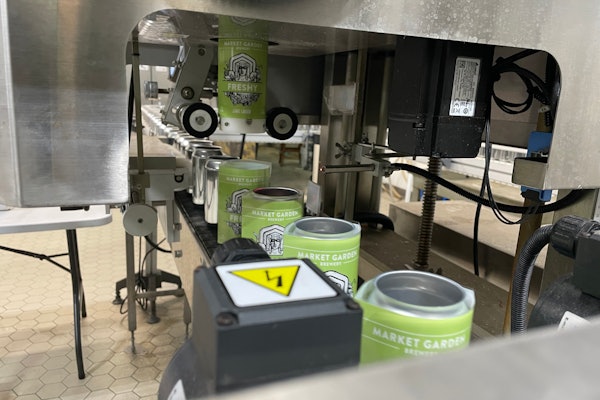In this era of sustainability, every U.S. company that utilizes petroleum-based plastic packaging should take a position on bioplastic packaging. With environmentalists vilifying the former and promoting the latter, each company should determine its own position through a systematic analysis that, whatever its length and detail, considers the following:
Consumer Attitudes
What are consumers’ attitudes toward bioplastics, and how do those attitudes influence consumer behavior? Don’t assume attitudes are positive just because most consumers have heard of global warming, the Green Movement, and sustainability. Far fewer have heard of bioplastics, and some who have might be misinformed. Nor should it be assumed that positive attitudes translate to consumer loyalty. Remember, consumers can acknowledge eco-responsibility yet eliminate it as a factor in making buying decisions if it requires unacceptable sacrifice.
Consumer confusion
What aspects might confuse the consumer? Start with the most fundamental: definitions. Bioplastics are polymers made from renewable sources; straightforward enough, but the term doesn’t convey its relationship to other terms, such as “biodegradable” and “compostable”. Biodegradable means the material breaks down by the actions of microorganisms, such as bacteria and fungi. Compostable means the material breaks down through a controlled process that combines heat, moisture, and oxygen.
Further complicating matters is the element of time. Does it matter that different biodegradable plastics decompose at different rates, as long as several years in a landfill, for example? Compostables will decompose at different rates, also, depending on what’s added to the composting mix. Then there’s the element of byproducts. Unless a bioplastic consists entirely of natural ingredients, it won’t decompose simply to carbon dioxide and water, but to inorganic compounds and biomass as well.
Consumers can be confused about the source of a bioplastic, left to wonder whether there are meaningful differences among those derived from corn vs. potatoes vs. sugar cane, etc.
The preceding and other sources of confusion can have their effects multiplied by marketing claims that rely on misleading comparisons or unfounded statements. Never forget that some consumers remain proactively vigilant against “greenwashing.”
Certification
Bioplastics need to be identifiable by the consumer, otherwise what’s the point? Competitive realities dictate it; furthermore, the concept of sustainability is based on environmental stewardship and profitability. A certification logo is the answer. The certifying organization should operate on transparent, objective criteria to earn the consumer’s confidence and reliance. That’s more likely when the organization’s membership consists of major stakeholders, i.e. suppliers, packagers, academia, and government. One organization that can serve as a model is the Biodegradable Products Institute, which certifies for compostability, as defined by ASTM D6400 or D6868.
The fewer the certifying organizations, the better, so as to minimize “certification shopping” by companies. A different type of proliferation owes to other certification logos—unrelated to packaging—that tout sustainability and are appearing on packages with increasing frequency. Carbon offsets are one example. Packages tattooed with logos are not only inartistic but confusing.
Capacity and infrastructure
Bioplastics have been commercial for more than 15 years. During that time they have demonstrated their potential, but they have not had the capacity or infrastructure necessary to fulfill it. Granted, there are some recent examples of companies converting to bioplastics, none more high-profile than Wal-Mart’s use of polylactic acid (PLA) containers for certain produce; however, petroleum-based plastic packaging retains its overall market dominance.
In order for U.S bioplastics manufacturers to mount a meaningful challenge, capacity has to increase by millions of tons of resin, necessitating, of course, the building of new facilities. Like all such investments, its ability to attract capital will be in proportion to the projected returns.
So what conditions can accelerate increased capacity? One is that bioplastic resins be compatible with standard converting processes, such as extrusion, blow molding, thermoforming, etc., used to manufacture film, sheet, and containers. This will eliminate the expense of new equipment or equipment modification.
Another necessary condition is that commercial composting capacity increases in accordance, if compostables are to compete on the basis of reducing the need for landfills. Incidentally, backyard composting will remain the province of a small minority of eco-committed households.
Sourcing
In the U.S., the major source of bioplastics is corn. But corn’s renewability doesn’t guarantee its availability. While the present amount of land under cultivation can supply a fledgling bioplastics industry, the future portends otherwise. The uncertainty of supply will not automatically be corrected by more acreage.
Bioplastics face competition from another sustainable alternative, namely ethanol, and since that biofuel constitutes only 3% (according to Federal statistics) of what’s powering the nation’s automobiles, its growth is likely to consume the greater portion of the non-food usage of corn. Farmers have been called “economists in straw hats”: What they plant and to whom they sell are motivated by profit. Economists are familiar with inelastic demand, a concept that applies to U.S. consumption of automotive fuel, but, alas, not to packaging. Quite the contrary, packaging is mostly regarded as an expense, constantly under cost-reduction pressure.
Some resin manufacturers will respond to the availability challenge through vertical integration, owning and operating agribusinesses that grow the corn. The same strategy can be pursued by major consumer packaged goods companies that choose to source and manufacture their own packaging.
Not to be overlooked is the competition for bioplastics from manufactured products other than packaging, among them, fabrics, clothing, furniture, plates, and eating utensils.
Genetically altered strains of corn that grow faster and are more resistant to drought and disease could increase overall supply. A possible impediment, however, is consumer attitudes. What assurances would be needed that such corn will not be part of the supply for humans and animals? Many consumers have displayed a skittishness over radiated, hormone-injected, and in general, genetically engineered edibles, which some have dubbed “Frankenfoods.”
Costs
The price premium of bioplastics has been a competitive disadvantage, but one whose degree is sure to narrow, due to high oil prices on one hand, and the coming economies-of-scale for bioplastics, on the other. Meanwhile, the strategy of the bioplastics industry is to achieve scale through large, national accounts. Smaller accounts willing to be early adopters also can negotiate competitive prices, because suppliers are betting on future business growth.
Sustainability has thrust forward the need to account for costs from new perspectives. Whether the discussion is presented as life-cycle, cradle-to-grave, or cradle-to-cradle, companies need a broader perspective than just materials-labor-overhead. Sustainability recognizes that the planet pays costs.
Performance
The specific application dictates the performance requirements of a plastic packaging material; nonetheless, the long list of possibilities are divided between functionality and aesthetics. PLA has acquired its front-runner position among bioplastics because, among other things, it can be processed into film and sheet, blown into bottles, or thermoformed into containers—all with acceptable performance.
Still, petroleum-based plastics are the most diversified and versatile of packaging materials, due to formulations that use various additives. As bioplastics seek to broaden their applications, a key consideration is the degree to which they can use additives and still retain their designation as green alternatives. Inorganic additives will remain after the rest of the bioplastic has degraded. Then again, sustainability recognizes trade-offs in pursuit of an improved net effect.
It’s possible for a bioplastic to perform head-on with a petroleum-based material well enough to cause new challenges as a result. A case in point is PLA bottles, said to have the look and feel of PET. The more the consumer can’t distinguish by appearance the PLA bottle, the more likely it might end up in the PET recycle stream, wherein it could be a contaminant. A related challenge is whether enough consumers are willing to accept yet another task of separating materials.
Bioplastics will have to perform in an era wherein innovation and smart packaging are more than buzzwords and, therefore, must seek not only equality with petroleum-based plastics, but also where possible, superiority. The food industry, in particular, offers opportunities. There’s a sizable niche awaiting materials that contain no components that migrate into the food, even when microwaved.
Government
It’s unknown if the federal government will spur the growth of bioplastics through legislation. But that uncertainty should not prevent the industry from lobbying its case. Investment incentives are more plausible than ever at a time when there is growing willingness to punish those companies having a heavy carbon footprint (carbon taxes, for example) and reward those with a lighter one.
Global
Bioplastics pose complications to global marketing because of the different levels at which they are embraced across continents, or for that matter, from country to country. For the U.S. exporter facing a varying set of governmental/regulatory requirements, the best strategy might be to package according to the most stringent among them. The strategy also can be employed if the U.S. company manufactures overseas and distributes in more than one country.
Petroleum-based plastics
What about the response from petroleum-based plastics? The industry is sure to step up its public relations campaign emphasizing increased recycling, especially in the wake of attacks on water bottles and shopping bags. With recycling being one of the pillars of sustainability, the industry will aggressively cite its long commitment, as evidenced by the number-inside-the-triangle symbol.
The industry isn’t relying solely on recycling but is venturing into ways to claim degradability, through various additives and modifiers. There also will come families of hybrids—blends of petroleum-based plastics and bioplastics—much like blends of ethanol and gasoline.
But there will be no complete or permanent truce between petro-based and bio-based materials. Attacks and counterattacks, claims and counterclaims, will crisscross the battlefield.
In conclusion, the analysis of bioplastics is multifaceted, with some facets having scant data available. The question of whether bioplastics have a future in packaging has been answered in the affirmative by this era of sustainability. It’s up to the individual company to analyze that future and to subsequently map a strategy.
Packaging consultant Sterling Anthony has worked for Fortune 500 food, healthcare, and automotive companies and has taught packaging at the university level. Comment by phone, 313/531-1875, or e-mail, sterling
[email protected]. His Web site is www.pkgconsultant.com.






























